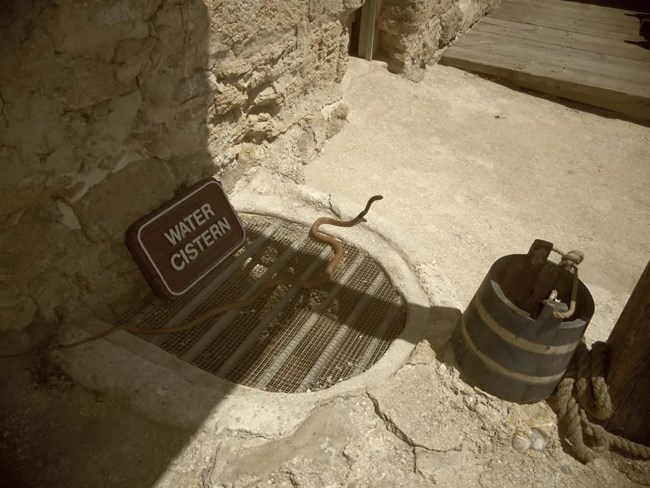
NPS Coachwhips are one of the largest species in the United States, growing up to 102 inches in length. This non-venomous snake will try to avoid people, but as with many snakes, it will defend itself if provoked! Coachwhips are very quick on the ground and can even climb trees! Coachwhips are diurnal, which means that they are active during the day. A variety of small prey is on the menu for this snake including insects, frogs, lizards, turtles, mice, and birds. Coachwhips are a foraging species and will search for their prey around vegetation and burrows. They have a Jacobson’s organ in their mouth which allows the snake to sense chemical signals sent out by their prey. Due to their quick speed and camouflage, coachwhips do not have many natural predators. Instances of owls and coyotes preying on this species have been recorded, but their main threats are human-caused through vehicle collisions and habitat loss. Fragile dune and scrub habitat utilized by coachwhips is also shared with threatened and endangered species, and it is important to conserve this habitat to maintain a healthy ecosystem for coachwhips and other coastal species alike. |
Last updated: June 11, 2021
